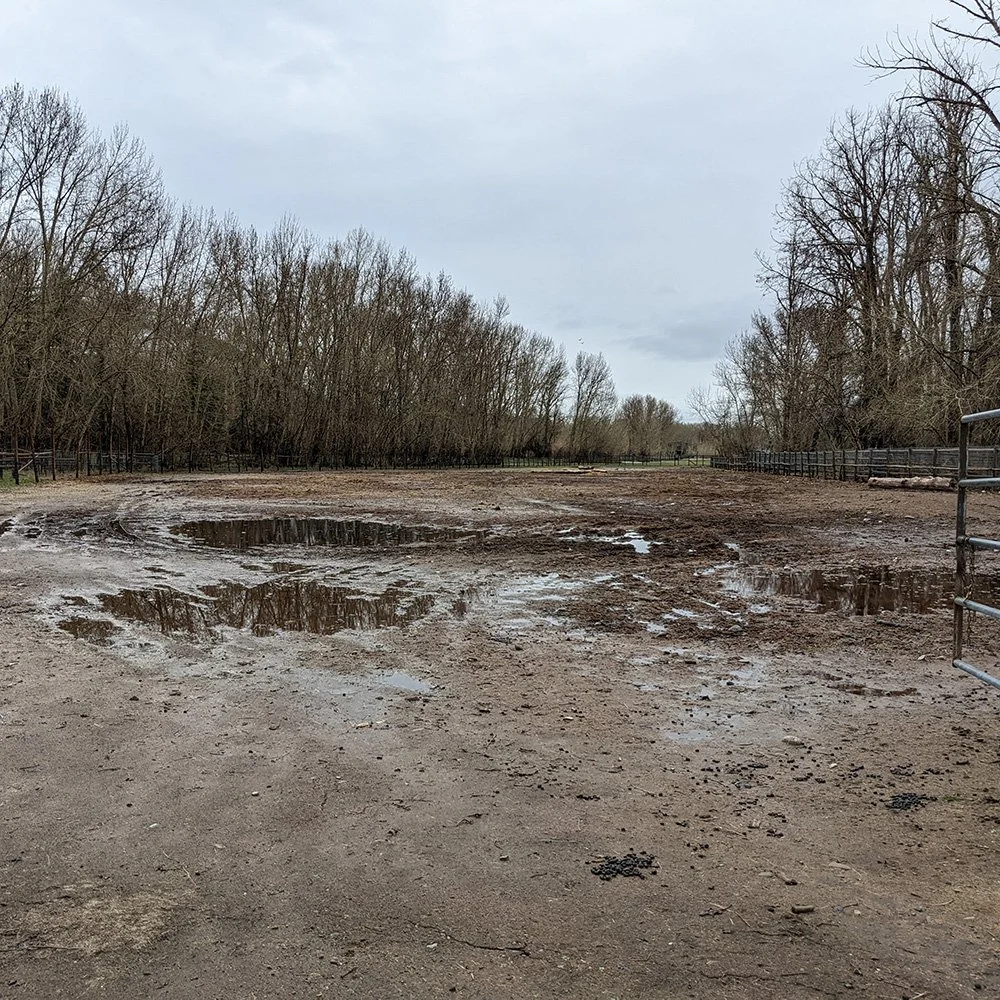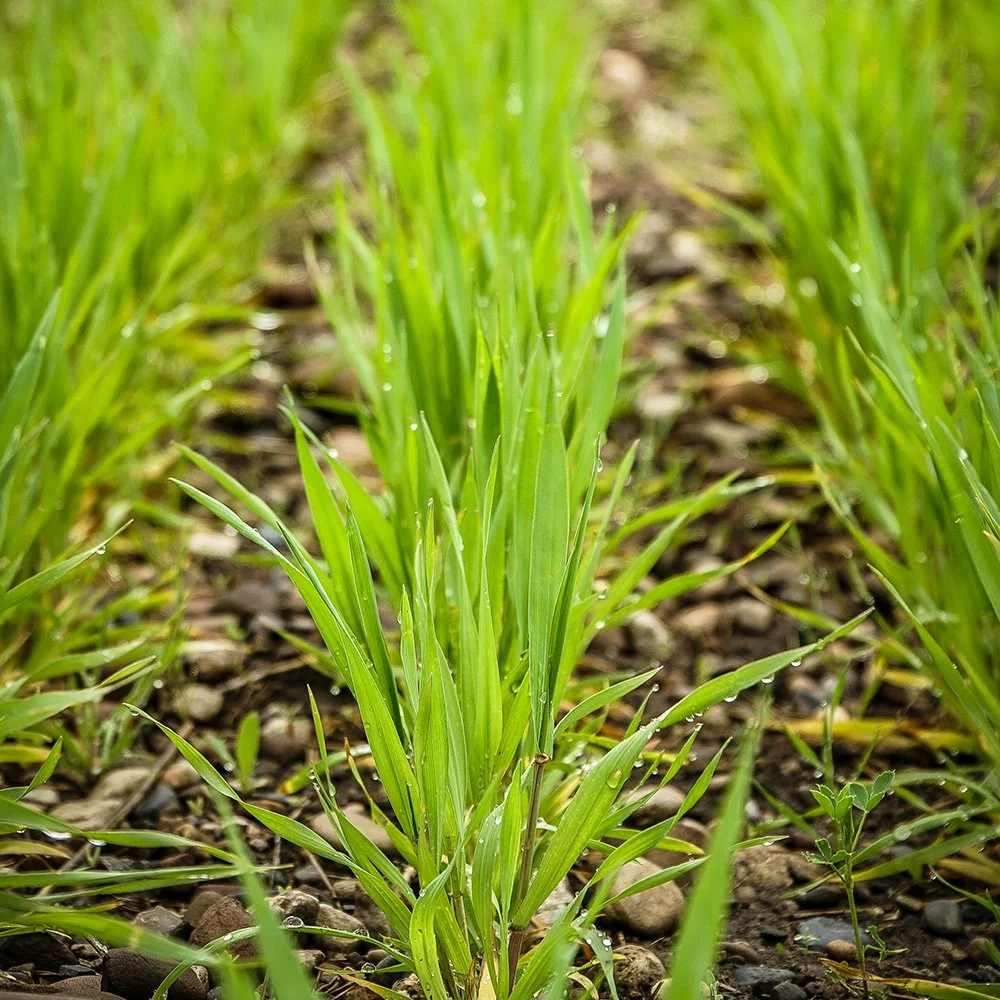Water-wise Farming
Water in Idaho has always been a challenge for farmers. Now, climate change, population growth, and increased residential and commercial use are putting serious pressure on producers. Local farmers are stepping up with innovative and practical ways to use water more efficiently. We spoke with Justin Stevenson from Hillside Ranch, Brooke Bonner from Drinkers of the Wind Farm, and Kathy Noble to learn about the changes they’re making to conserve water and regenerate the aquifer.
Adapting to a New Water Reality
“The future of water is the biggest uncertainty for farming in the Valley,” says Justin Stevenson, owner of Hillside Ranch in the Bellevue Triangle. His family has been growing grain here since the 1970s, and over the years, they’ve had to adjust to shifting water availability. Today, Hillside Ranch grows barley, alfalfa, and wheat varieties, some of which his sister, Brett Stevenson, uses in Hillside Grain’s locally milled flours.
Hillside Ranch, like the majority of agricultural producers in the Wood River Valley, relies on surface and groundwater supplies fed by mountain snowpack. Declining and variable snowpack has reduced available water, resulting in new regulations for farmers. “It was a mindset shift for farmers. We have to be ready to adapt each year based on water availability,” Justin explains. Hillside Ranch has been on the cutting-edge of water-use innovation for years, working to implement a variety of water reduction and soil management strategies that prepare them for the uncertain water availability.
Idaho Water-Saving Strategies
“We’ve upgraded our sprinklers to more efficient systems, lowered their height to cut down on evaporation, and added variable rate pivots—these adjust watering speed based on soil conditions,” Justin says.
One of the biggest game-changers has been installing soil moisture sensors throughout the fields. These sensors send real-time data to Justin’s phone, letting him know exactly when and where water is needed.
For Hillside Ranch, water conservation in Idaho is more than changes to their irrigation practices—it’s also about increasing soil health. Justin is shifting toward minimal tillage to preserve soil structure and water-holding capacity. “We’re working to reduce soil disturbance and increase organic matter to improve water retention,” he says.
Restoration Agriculture
Brooke Bonner vividly remembers the struggle of taking a soil sample during her first year managing Drinkers of the Wind Farm. “I was jumping on the shovel, and I couldn’t get any soil out at all,” she recalls.
For 50 years, Brooke’s stepfather, Archie Bouttier, bred champion endurance Arabian horses along the Big Wood River south of Bellevue. When he passed away unexpectedly in 2021, Brooke and her mother faced a tough decision—sell the property or find a way to preserve it.
“The credit goes to my mom,” says Brooke. “She believed in my dream of turning this into a regenerative farm.”
The rock-hard patch of compacted soil in a former horse pasture is now thriving with a variety of cover crops, trees, and shrubs, thanks to a system of swales and berms engineered to follow the land’s natural contours. This is the start of what Brooke identifies as “restoration agriculture.”
“The swales break up soil compacted by years of horse hooves, collect every drop of water, and allow it to soak in rather than run off,” Brooke explains. “Our goal is to turn the soil into a sponge.”
The increased water holding capacity generated by the swales supports over 4,000 trees and shrubs (more than 100 varieties), which help enrich and shade the soil, sequester carbon, and produce food. “As their root systems get established over the next few years, we’re looking forward to being able to dramatically reduce the need for supplemental irrigation, further protecting our valuable aquifer.”
While these perennial crops mature, the farm has also launched a half-acre market garden. “We’re minimizing plastic use, using drip irrigation, cover cropping after each season, and keeping a diverse mix of grasses, clovers, and even weeds between our rows,” Brooke says. Their produce is available at the Wood River Farmers Market and their farmstand on Lower Broadford Road.
Technology Meets Tradition
Local farmer and landscape architect Kathy Noble is tackling water conservation from multiple angles. On her farm south of Bellevue, she’s using an advanced irrigation system that reads soil moisture at different depths and locations, then adjusts watering automatically.
“Most people overwater,” says Kathy. “With our sandy soil, that extra water just drains below the plant’s roots.” In one test on a neighboring farm, this technology helped maintain the same crop yield while using 20% less water.
Beyond farming, Kathy is passionate about native landscaping. She grows native and drought-tolerant plants on her property and collaborates with the Environmental Resource Center to teach workshops on selecting and caring for these species. She’s also helping the Wood River Land Trust revamp its Trout Friendly Lawn program. “Since we need water to grow food, we have to do whatever we can to reduce household and residential water use. The best way to accomplish that is by designing residential landscapes that are drought-tolerant and use far less water,” Kathy states.
Kathy believes municipalities should take action, too. She’s advocating for irrigation training and policies to reduce public water use and hopes each town will create a high-visibility demonstration garden with native plants. “These gardens will be a hands-on way for communities to learn about plant selection, irrigation, and maintenance,” she says.
Water-wise Farming Conclusion
As Kathy Noble says, “climate change will have a stronger and stronger impact on our snowpack and the resulting available water.” Addressing this reality requires a wide range of solutions from residential lawns to agricultural fields. The farmers and advocates highlighted in this article are taking different approaches to the same end goal, producing nutritious food while minimizing the impact on Idaho’s water resources.
You can help too. Choose locally grown food and take the opportunity to ask your farmer about their water usage. Check with ERC about Kathy’s upcoming workshops and start planning a transition to drought-tolerant landscaping.






